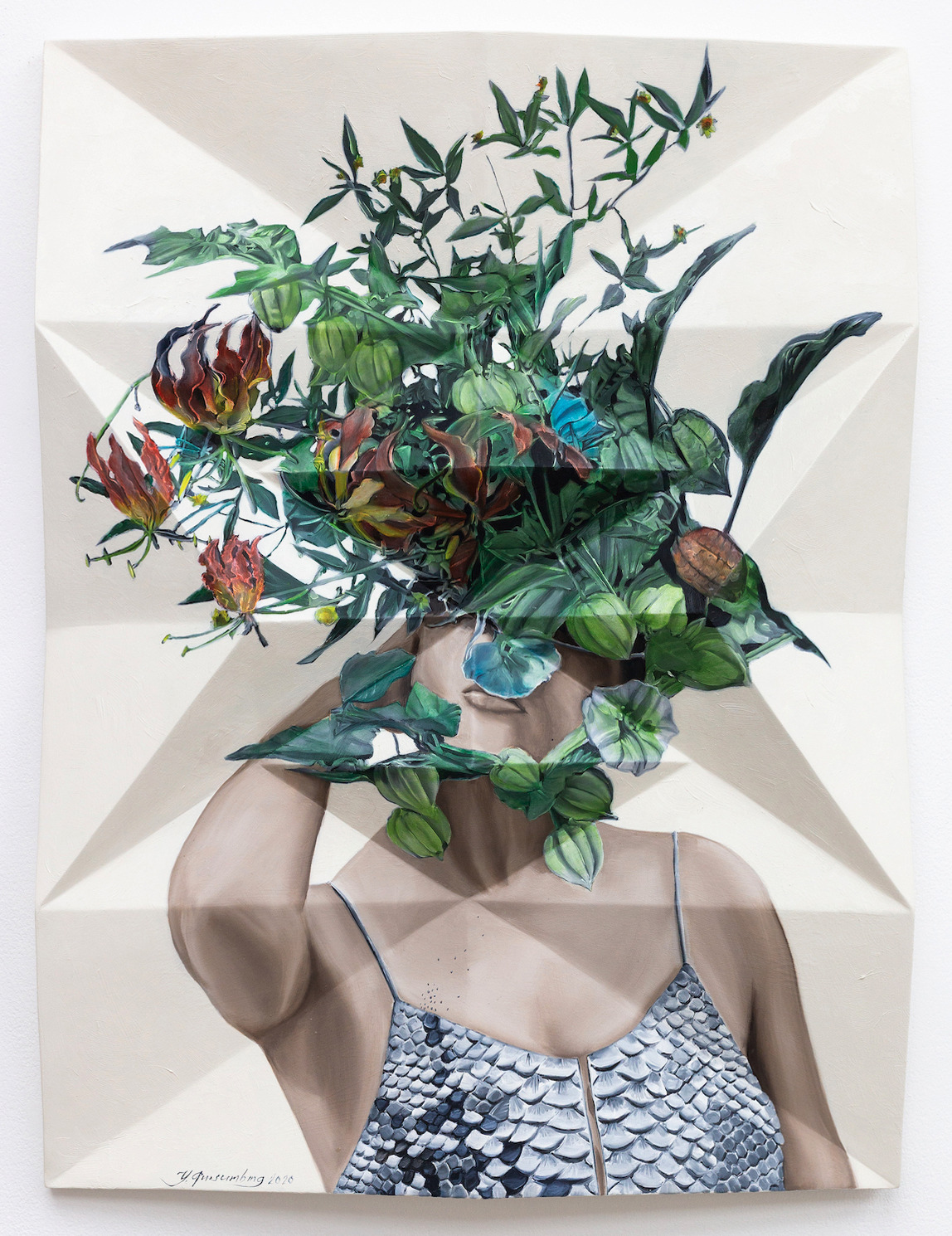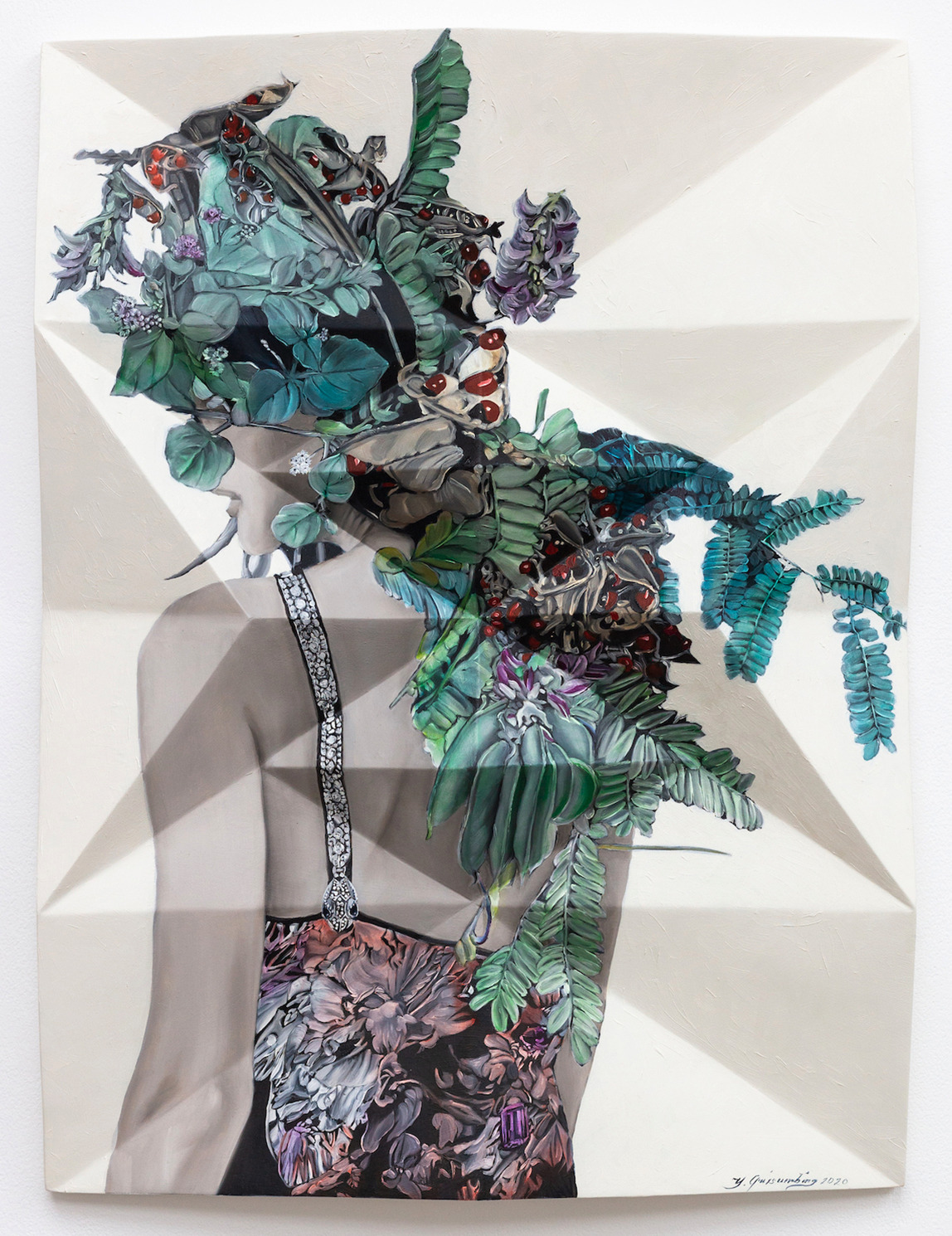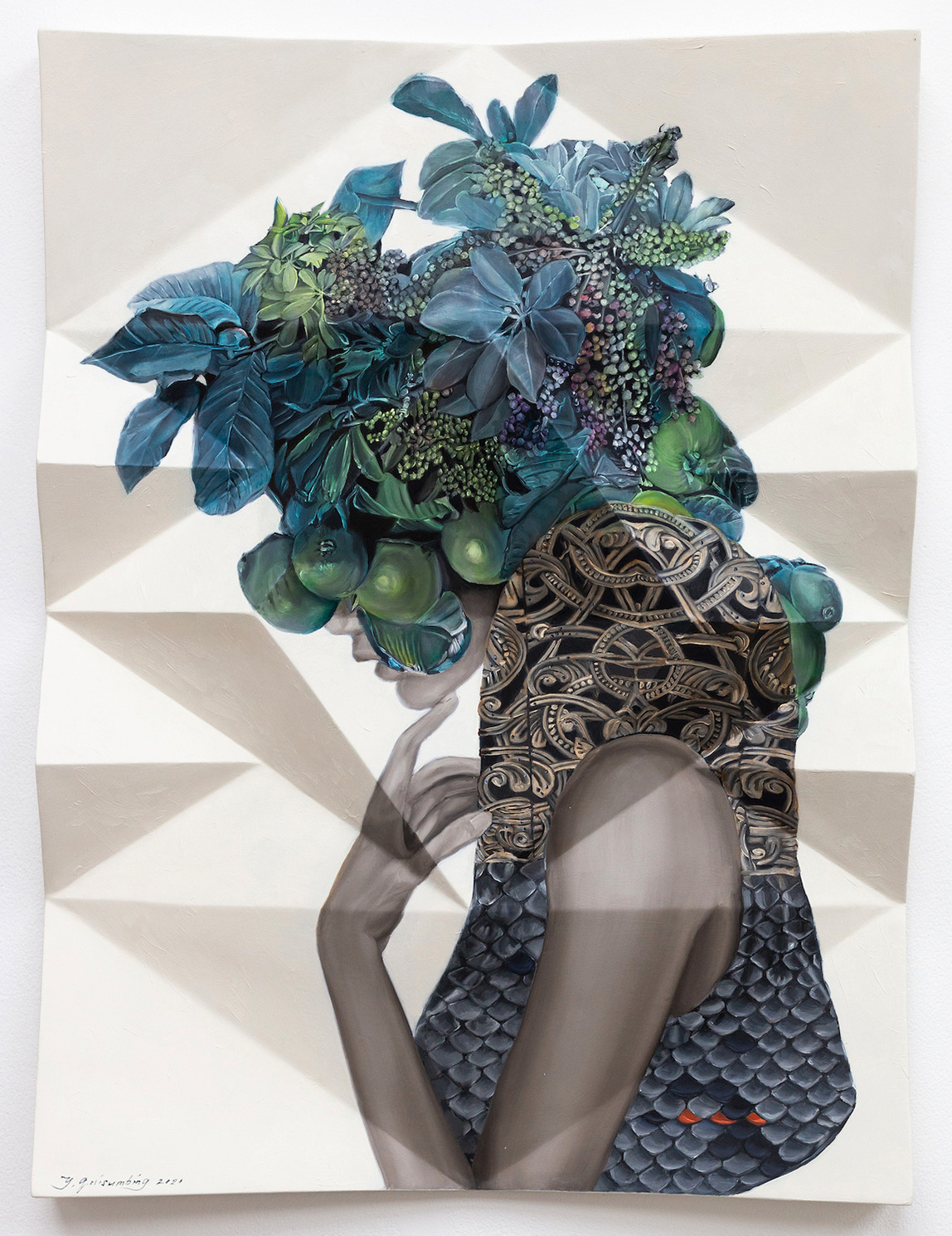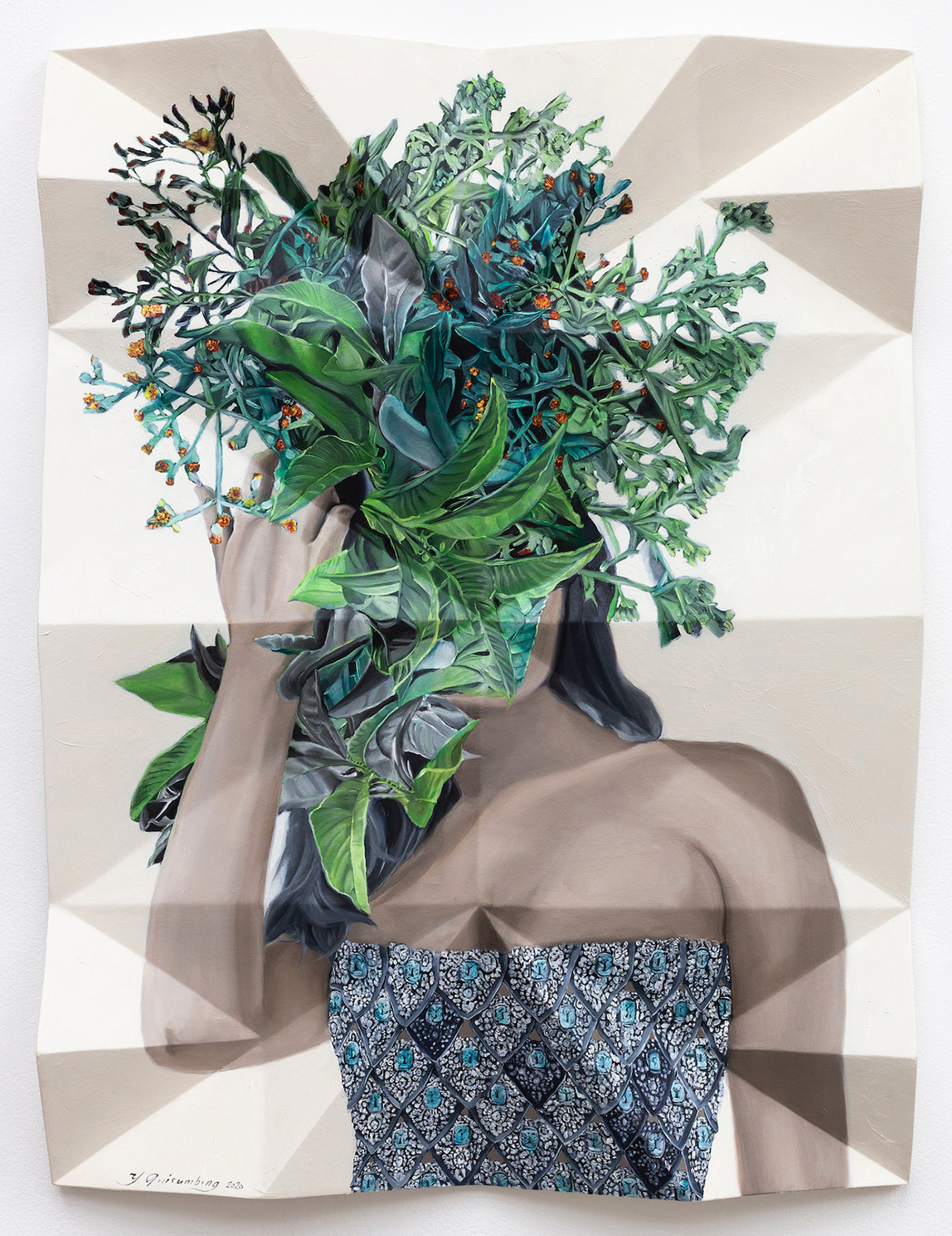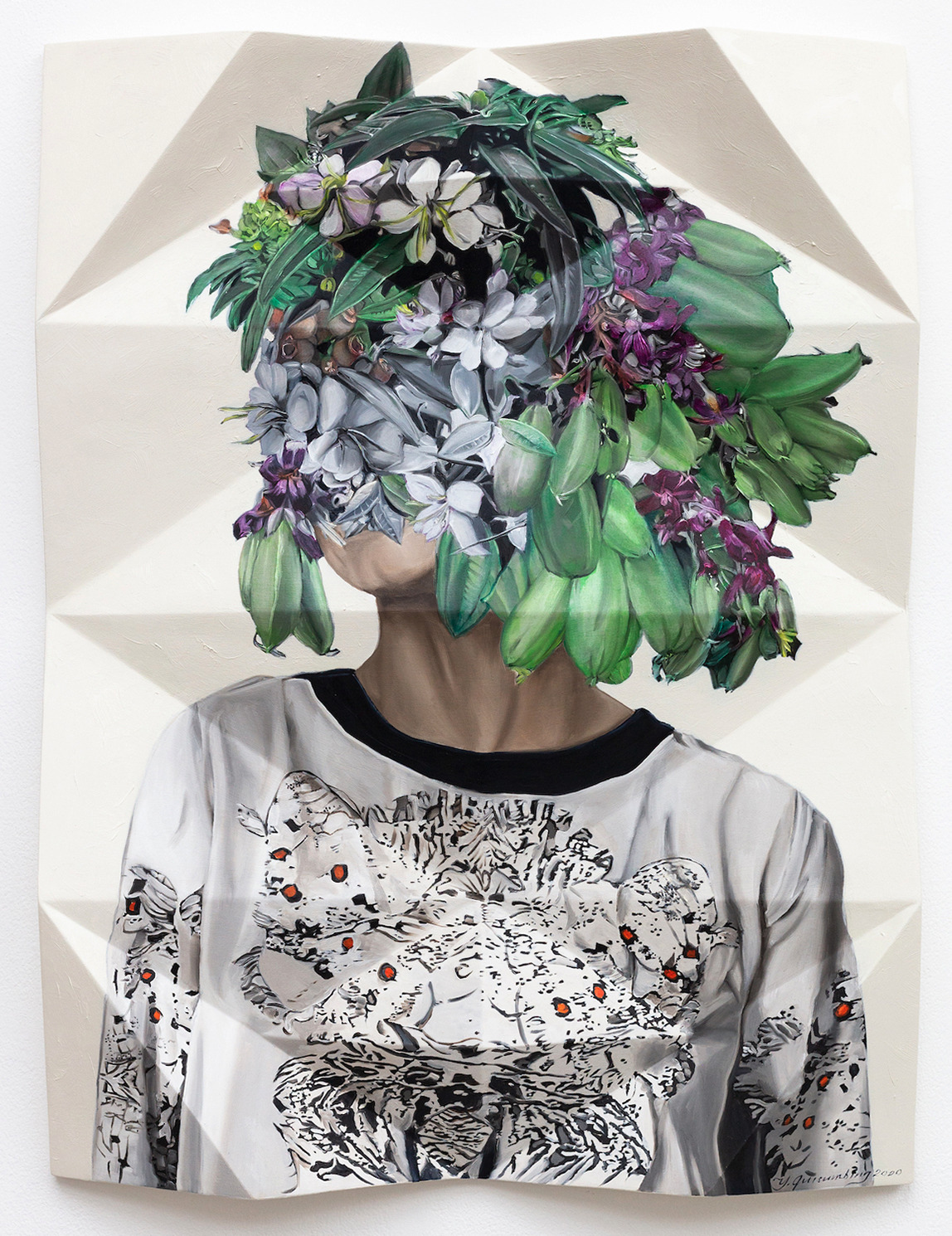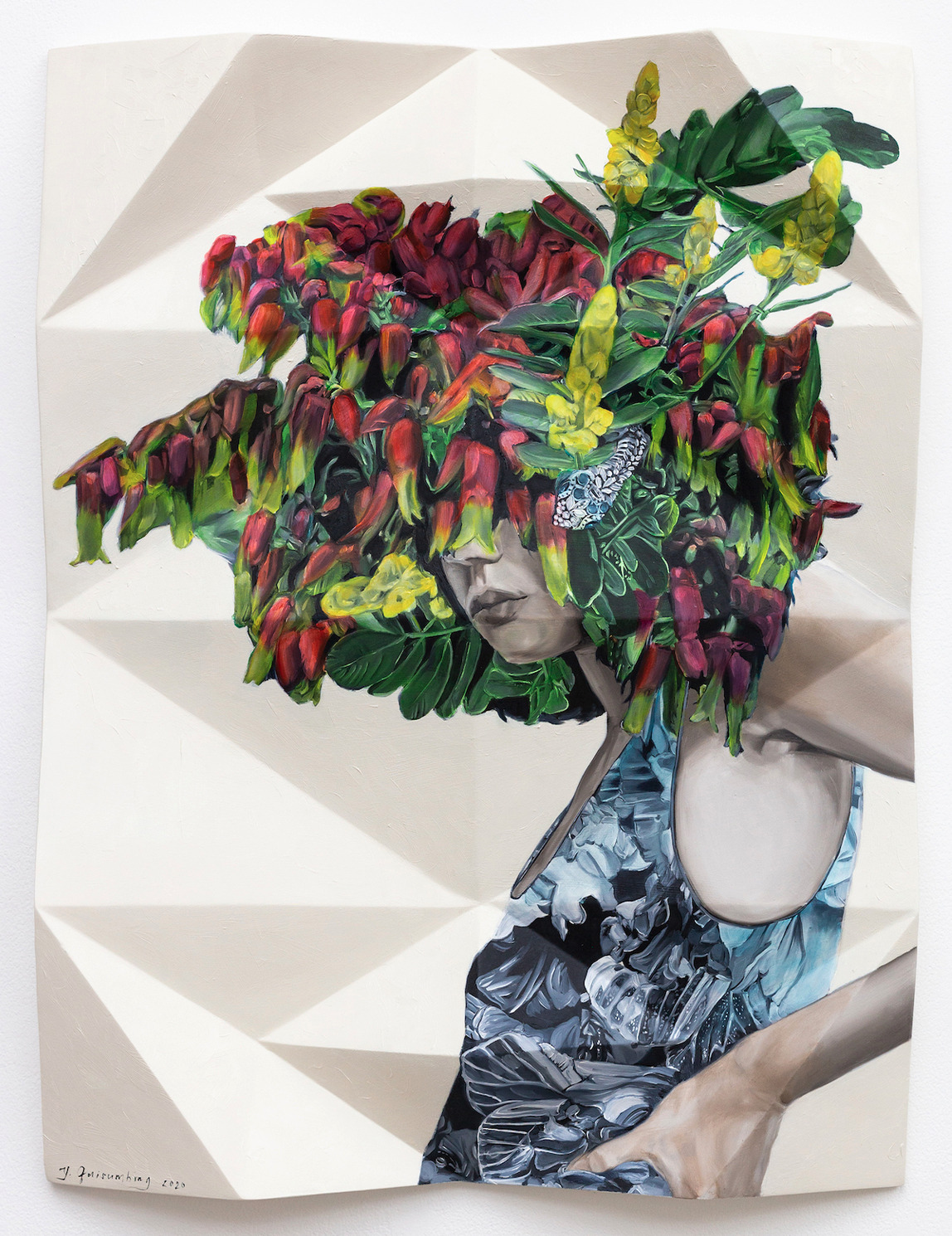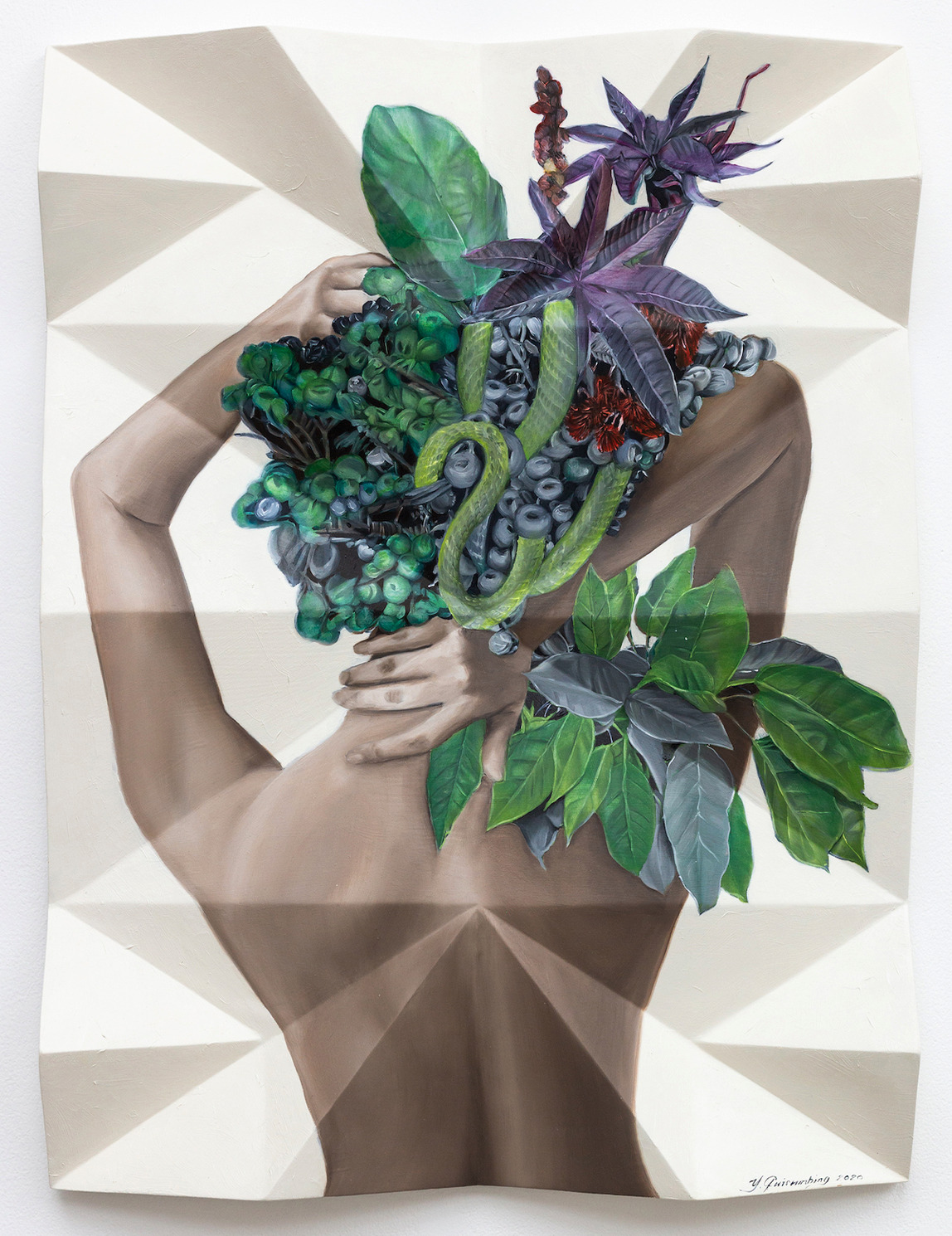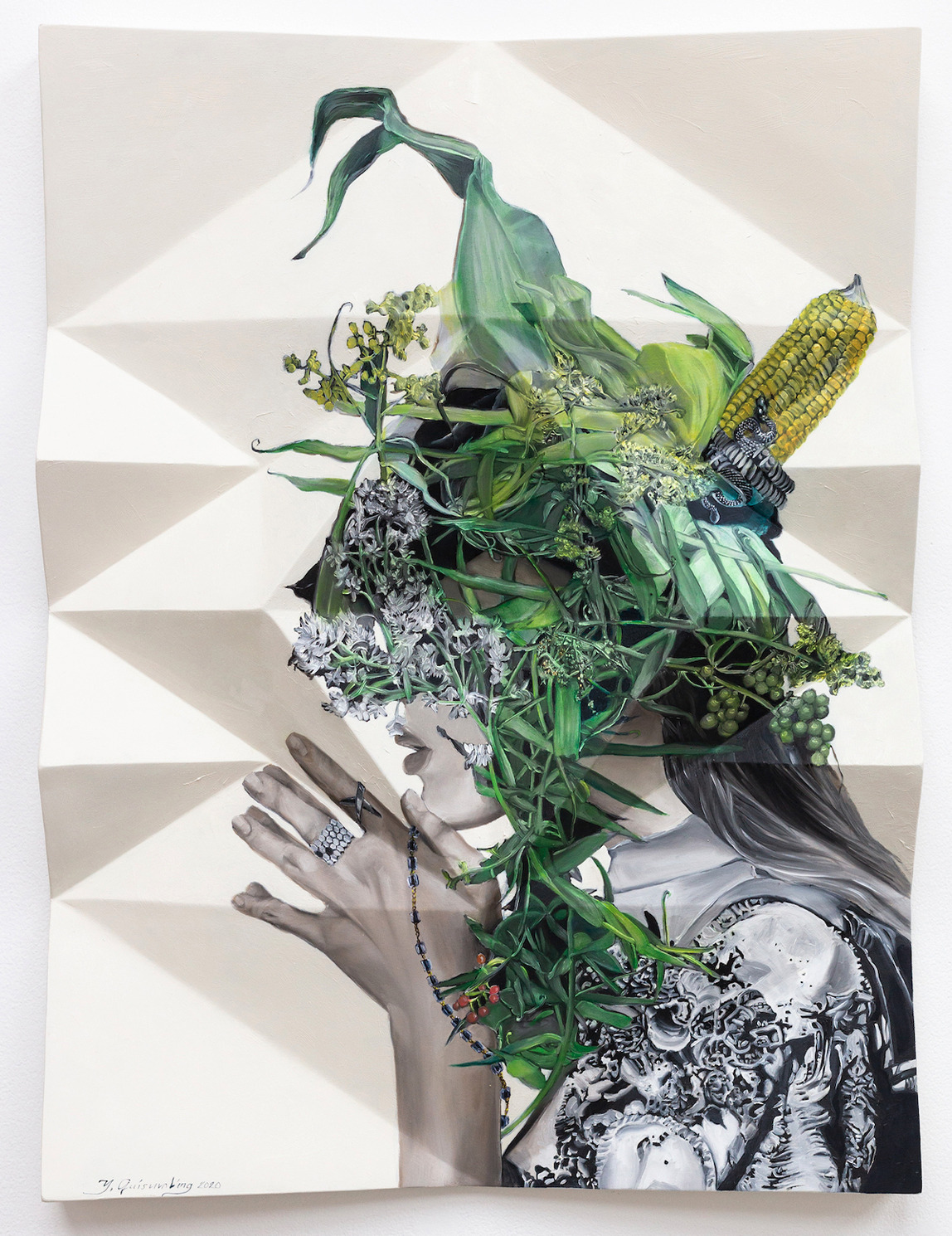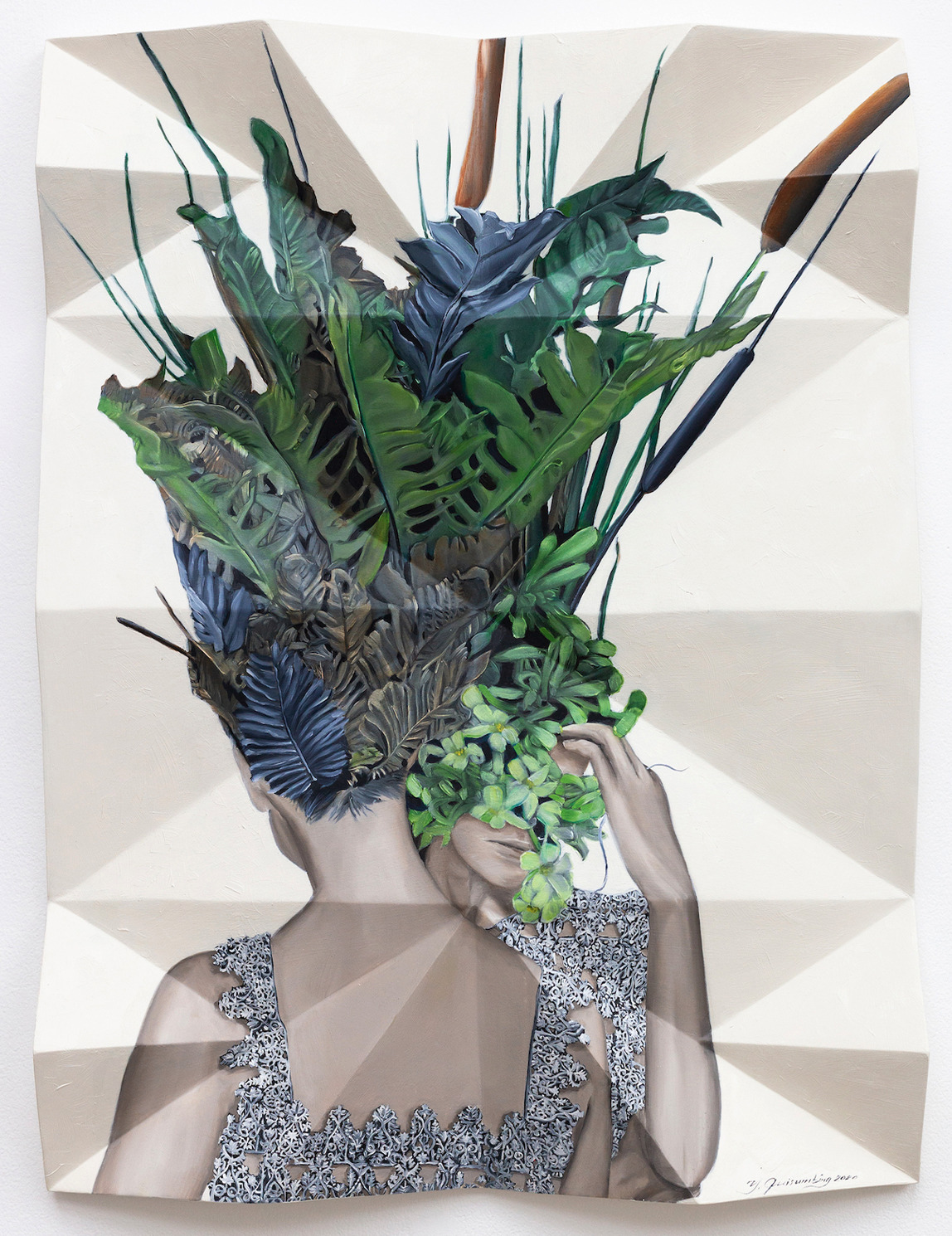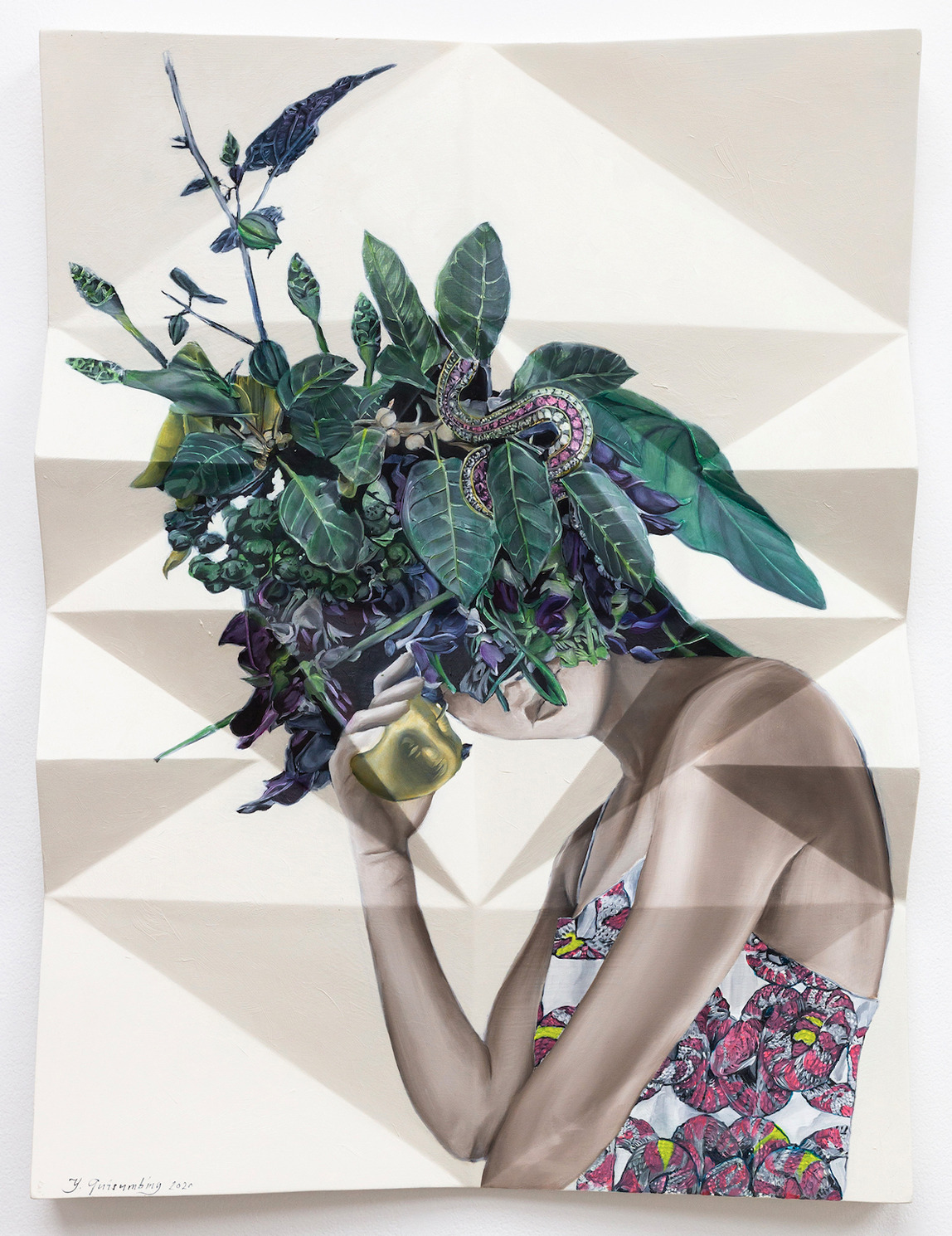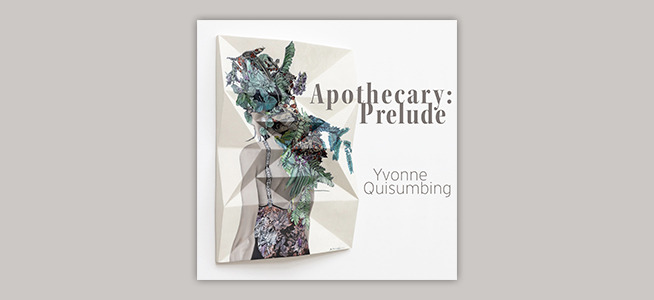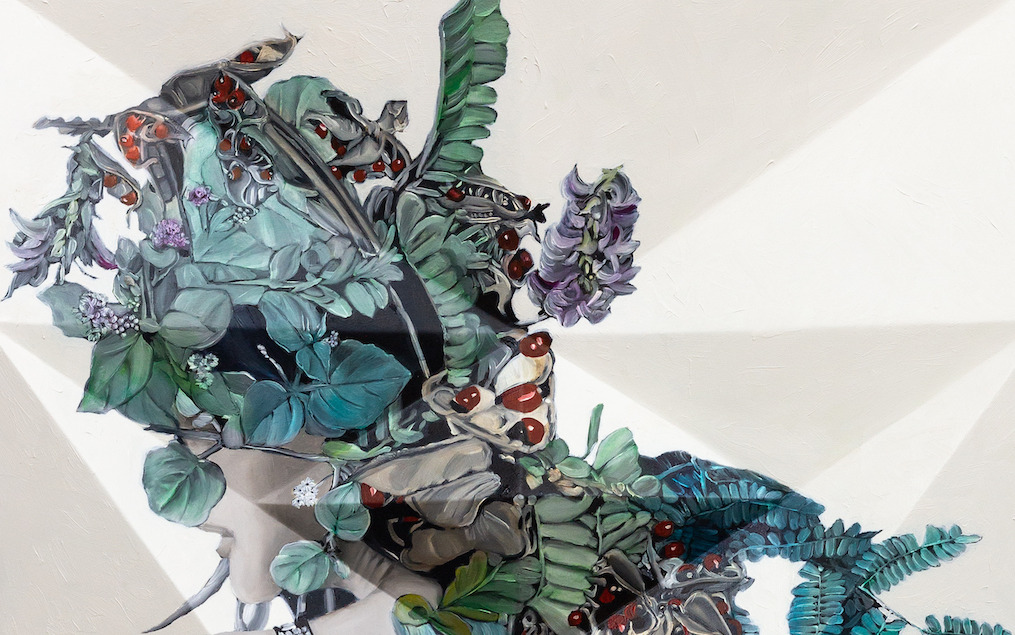
Apothecary: Prelude
Yvonne Quisumbing
Silverlens, Manila
About
The APOTHECARY series was started by Yvonne Quisumbing in 2018. It was inspired by Dr. Eduardo Quisumbing’s Medicinal Plants of the Philippines (1951, 1978), a well-known book on the healing properties and applications of Philippine flora. In the first collection of the APOTHECARY series, seven portraits of human afflictions were portrayed with corresponding curative herbs fashioned as masks. This second set hones in closer to the female artist’s own body, exploring women’s ailments that occur during conception, birth and postnatal stages. In APOTHECARY: PRELUDE, there are three elements that vie for attention—the masked face, the clothed and accessorized body, and the surface. Each bring in its respective narrative. Together, these converge as a lucid structure of visual and tactile textures that comprise the breadth of artisanship of the artist.[1]
The bodies portray the Philippine health condition. By depositing human frailty in fashion, Yvonne grounds design to life and struggle. The disease is in the details. Wrapped around lithe human forms are clothing with subtle signs of decay—from blackened scales, to errant stray string of delicate lace about to be unraveled by a threatening finger. Likewise, Yvonne accessorizes not to adorn to call attention to a hidden putrefaction. Perched on a shoulder is an orange-accented butterfly sleeve bag patterned after worms feasting on decomposing wood. Gripped around fingers are silver rings of an airplane and a snake, signifying how the esteemed local medical profession is but an export product. A golden apple neatly ties up the narrative of greed and ceaseless consumerism. There is a general sense of resignation that lingers in these languid and indifferent bodies prone to praying in the face of deep-seated national maladies.
These bodies are painted on a sculptural substrate. The play with the surface is the newest dimension to Yvonne’s wide repertoire of methods telling of a deeper descent into a situated creative practice as a designer and artist based in Cebu. The geometrical undulations on the sculptural substrate are patterned after the labid, a Visayan snake tattoo pattern of pre-colonial Filipinos. At first glance, at eye-level—the portraits appear as a flat representational art. But this facade belies a tedious process—of cutting patterns and reconstructing perspectives—to piece together a semblance of a total flatness stretched unwarped over the uneven surface. Traditionally, the labid is tattooed ‘zigzagging up the leg to the waist.’ (Scott, citing Sanchez, 1994). In effect, Yvonne establishes the fragmented patterned surface as the infirm body itself in this series, rounding up a refined but nonetheless palpable caustic fashion and art statement on the state of Philippine health.
With the same skill that imperceptibly embedded the current and the local through details and pattern, the masks also conjure a rich historical account. APOTHECARY: PRELUDE comes a little over a decade since Yvonne Quisumbing commenced her configurations of the mask form. From her 2009 series of delicate sheaths drawn over the human face to the 2016 series of luxurious flora and fauna headgears rendered in monochrome, the mask has become a recurring motif in her body of works. Perhaps a residual tendency from the fashion field she operates in, she translates an industrial focus on the clothed body as the parallel erasure of the face. A terrain relatively uncharted, she holds on to the overlooked face as a negative—the blank canvas upon which she has increasingly experimented on throughout the years. In this collection, the lush masks are made of local medicinal plants listed in Dr. Quisumbing’s book known to cure female problems, portrayed by the ailing fashionable bodies.
A close reading of Medicinal Plants of the Philippines (Gutierrez, 2018) yielded how the research was not strictly about pharmacopoeia but instead a catalogue of the “principally invasive species and their medicinal uses around the world that draws from over 630 academic publications.” Accordingly, this taxonomy that put value in the nondescript and the commonplace in Philippine flora was made in the context of the post-war rehabilitation, wherein knowledge production was made adjunct to upholding the fiercely fought Philippine national independence. For this reason, the function of the Philippine flora that Yvonne painstakingly wove together as palliative masks reconstruct a humane practice that, more than anything, aimed at overcoming a period of widespread pain and destruction by focusing on the nearest and dearest.
In the wake of the present Philippine context burdened by another kind of war, these three elements—mask, fashion and the snake—all point to a comforting fundamental truth. Life undergoes shedding and renewal. The snake sheds it skin as the cycle of fashion does, whose pattern is akin to the age-old magico- religious belief in masking and unmasking that maintains hope through transformation and rebirth. Yvonne rationalizes the alternating light and dark tendencies of fashion to position an interdisciplinary practice that also sees across the realities that dictate norms within separate fields of expertise. This is the altruistic vision of the apothecary. At the center of the wilderness—that is the fraught and fragmented conditions of the present—is the apothecary. Informed, she dispenses not panacea but compassion. The Hebrew word for compassion, rachamin, was derived from the word rechem that means womb. For indeed, at the very end, one also encounters the beginning. Life and death are but two sides to living. It is the recognition of the dual nature of life—the inevitability of the cycle—that one moves beyond the inertia of fears and constraints to seek strength, meaning and finally, healing.
References:
[1] Yvonne Quisumbing studied design, film and is currently finishing her MFA. She started designing clothes in 1999. In the same year, she won the Japan Airlines Award in Makuhari Asian Fashion Competition, Osaka and became a member of the Young Designers Guild of the Philippines (YDG). She has since gained critical attention in the fashion field. She represented the Philippines at the Concours de Jeunes Creatur de Mode in Paris in 2001 and 2005; and won the grand prize in the Philippine Fashion and Design Competition for Apparel (2001) and Accessories (2005).
Scott, W. H. (1994). Barangay: Sixteenth-century Philippine culture and society. Quezon City, Manila, Philippines: Ateneo de Manila University Press.
Gutierrez, K.C. (2018). ‘Rehabilitating Botany in the Postwar Moment: National Promise and the Encyclopedism of Eduardo Quisumbing’s Medicinal
Plants of the Philippines (1951)’ in Asian Review of World Histories, Vol 6, Issue 1, pp33-67.
Yvonne Quisumbing (b. 1975) studied design, film and is currently finishing her MFA. She won local and international awards in design that gained her critical attention in the local fashion scene. Elements from her 20-year discipline honed in fashion and design carries on in her artworks albeit refracted onto recurring motifs as could be seen in her enantiodromic representations of clothing and masks. Seeking out opposing qualities to internalize and construct wholeness, her interdisciplinary works are peaceable critical inquiries on separate systems that encompass the society.
Works
